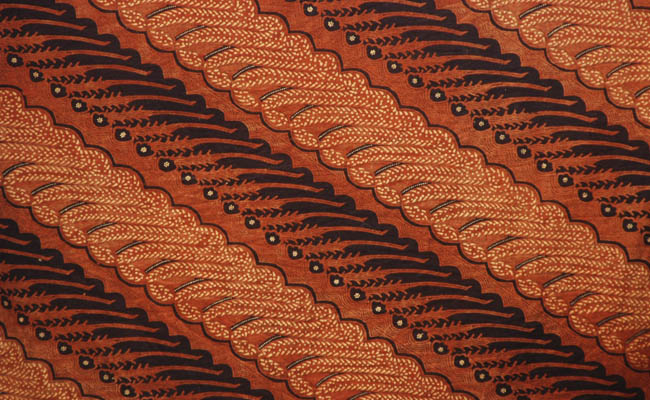
 With the warm weather approaching, vibrant prints are definitely taking center stage for the season. One motif that had been especially popular lately is batik– an Eastern resist method of dyeing fabric that results in gorgeous patterns and imagery.
With the warm weather approaching, vibrant prints are definitely taking center stage for the season. One motif that had been especially popular lately is batik– an Eastern resist method of dyeing fabric that results in gorgeous patterns and imagery.
Batik is occasionally confused with tie-dye, though in a way it is similar. Both use a resist, a way to keep the dye from penetrating the textile in certain areas. However, rather than “tying” up the fabric, wax is used to create beautiful patterns on the cloth.
Whatever is “waxed” on the fabric will show up as an image after it is dyed. The process itself is incredibly versatile. The wax can be painted on, printed with a stencil or stamp, even splattered. After dyeing, the wax is ironed out, and the stains steamed away.
Much like silkscreen, batik is done in layers, with each color being dyed separately, which can make for very complex designs. The results are breathtaking, and range from bold and graphic to delicate and feminine.
There are many different variations of Batik in different parts of the world, the most recognizable being from Indonesia. These textiles are covered in intricate, highly detailed patterns (done by hand!), usually florals or other symbols that have meaning within the community. The palette is mostly earth tones, with occasional pops of brighter color. Dries van Noten put out a collection inspired by this aesthetic, packed with tons of fun, unique prints.
Batik also has traditions in Japan. There, wax-resist is called rozome, and is the method used to paint silk for kimonos. In school, I was lucky enough to be able learn fabric dyeing from a rozome master. We learned how to create the graceful effects that characterize Japanese textiles, including layering the wax to create shading, as well as the distinctive style of painting. The soft, muted brushwork is a big departure from other forms of fabric dyeing, but creates an elegant and iconic result.

shem
Very insightful!! Thanks for sharing.
Nicole Giordano
Thanks Shem! So glad you enjoyed it. We will be highlighting some really interesting fabrics in the coming weeks, so check back if you can.:)